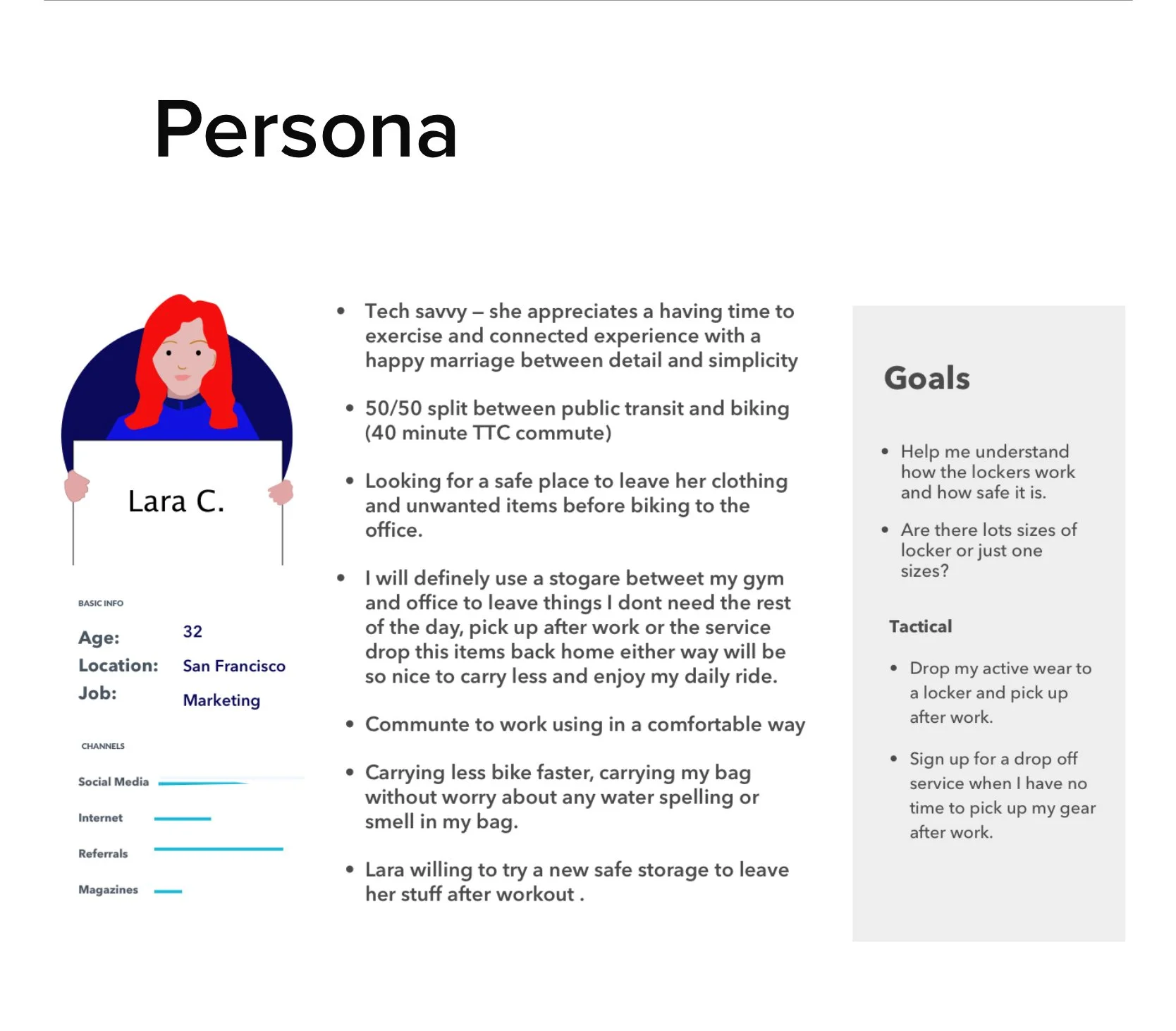How may we created a safe 24 hours storage for items don’t need in your daily commute!
The Solution
%
%
%
Project Overview
Research Categories
Studies Type
Role/Contribution
Time line
Relevant Tools
Cross-Functional Team
Stakeholder Teams
Users
Evaluative interviews, Competitive Analysis.
Research Lead, UX Strategist. 16 weeks
UserTesting, Miro, Zoom meeting, Team meeting.
UX Manager, UX Designer
Development Product, Product Managers. 5 users.
Brief
Problem statement
Locker Room is a 24-hour storage service that allows people to store personal items and pick them up at a convenient location.
In San Francisco is not a real storage that can be safe to storage items during the day!
Business objectives
High-Level Research
this application was designed with the idea to simplify the daily routines of people with active lifestyles.
Prioritized engagement by creating a intuitive Application for daily commuters with different activities.
Research overview
I lead UX research conducting interview , surveys.
Focus in user needs and simplifying the steps for usage.
Methodology
-
Conducting interviews with stakeholder in the organization, senior and leadership.
-
I evaluated their overall user experience in the following areas:
• Create a new account and navigation
• Sign-In
• Price
• Updates.
-
determine whether users find this application valuable and to understand the demand for secure lockers during daily bike commutes.
Artifacts
Persona
I develop a Persona to learn about our main user, This user is a full time employed living and working in San Francisco, he/ she commute to work in a bike everyday, he/she have activities before and after work such as: gym classes, network events /happy hour, book reading sessions and others.
our persona need to change several times a day and is difficult to go back home to change or stop by after work!
That why we created Locker room a place to keep safe clothing books and pick up after work!


